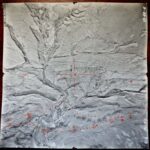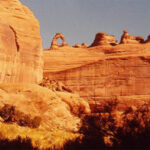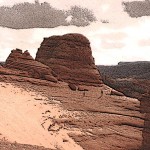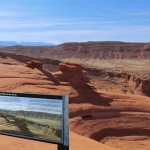
When I posted last week’s story about Arches in the 1950s, I had not intended to do a “part 2.” But later I remembered hearing Lloyd talk about the substantial role he and superintendent Bates Wilson played in laying out the new road alignment. And it reminded me of the black and white aerial photos I found in a trash can at the Arches visitor center in 1977. The NPS had just received a new set of color high resolution images of the park, and considered the old ones to be worthless. I fished them out of the can and even checked with my boss, to be sure they no longer wanted them. Like so many other artifacts I have from my days at Arches, from weather reports to wildlife observation cards, even to the old wooden signs, one agency’s trash was my treasure, I’m glad I have kept these historical remembrances all these years…JS




